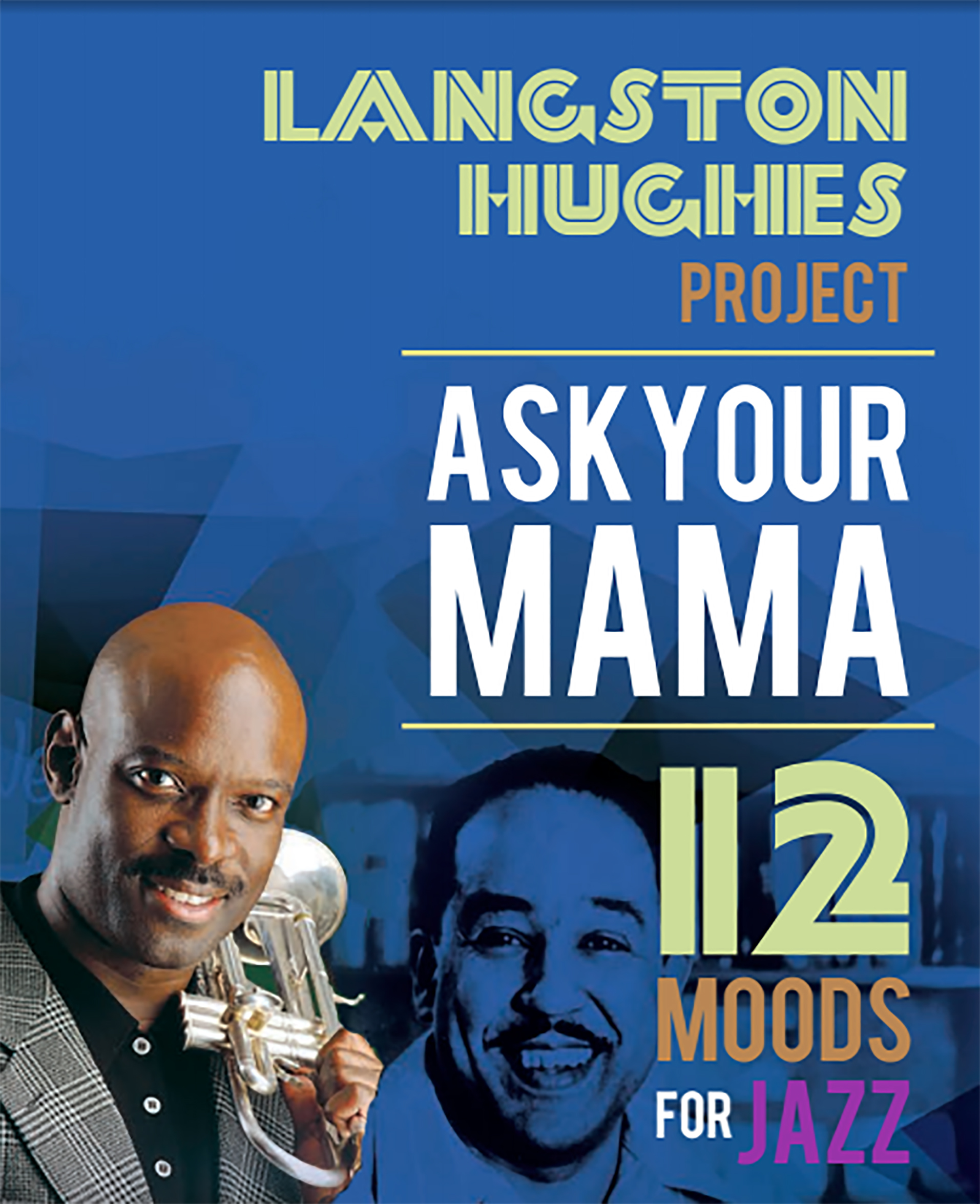Langston Hughes Project
What is This Program?
Black History Month is one in which we celebrate the achievements of African Americans and recognize their role in United States history. With great adoration for his culture and background, Ronald C. McCurdy created a multimedia concert performance of Langston Hughes’ jazz poem, titled “Ask Your Mama: 12 Moods for Jazz”, with a goal to share the struggles that African American men, women and families lived through. Langston Hughes’ admiration for artistic and social freedom prompted him to create poems that Ronald C. McCurdy used to link with music and images. McCurdy provides a visual backdrop featuring the art of African Americans in which Langston Hughes greatly appreciated. The performance combines the Harlem Renaissance, the post World War II Beat writers’ coffeehouse jazz poetry world and the looming Black Arts explosion of the 1960s. Most definitely, the purpose of this program is to illustrate how life was for African Americans as they faced violence and societal tensions throughout the 1900s.

Ronald C. McCurdy’s advertisement of the Langston Hughes Project performance https://go.activecalendar.com/etsu/site/students/event/langston-hughes-project/
Symbols
First off, there are numerous symbols within the poem representing African American hope for independence and the societal tensions of their time: rivers and railroads, civil rights leaders and artists. Every African American was seeking freedom and independence during this period. In the poem, rivers and railroads are symbolic of an African American person’s way out. Rivers and railroads were a possibility of freedom through travel, travel to new unruled land to start a new free life. Additionally, a civil rights leader, Martin Luther King was a part of Langston Hughes’ and many other African Americans’ dreams that “the negroes of the south have taken over”. The inclusion of his name and role as the governor of Georgia represents the African American perspective. This perspective is that civil rights leaders could take over and earn liberation from the wealthy whites. It was a dream, but they hoped to achieve it. To continue, Leontyne, the first African American opera singer on a television performance at the Metropolitan Opera, is repeated frequently. This shows that an African American can break through the barriers of discrimination in order to live the dream of a successful artist. These three symbols utilized within the performance exist to explain the dreams of African Americans in the 1900s.
Connection with the Curriculum
Furthermore, the Langston Hughes Project directly connects with the curriculum in HIST 126 because one of the central theme, what freedom meant to people of color of the period. In the classroom, readings such as “African American Mosaic: A Documentary History from the Slave Trade to the Twenty-first Century (Vol. 1)” and “Liberty Further Extended” put forth the idea that African Americans wanted to be free yet would refrain from putting themselves above; they wanted an equal playing field. Also, freedom meant that everyone, regardless of color, deserves the exact amount of respect. There were numerous tools used to say that it was their right to earn freedom: the words of God, the law of equity and justice which they have a natural right to and respect. In comparison with the classroom discussions, the Langston Hughes Project explains what freedom meant to African Americans through poetic language and with a different take on how to earn their freedom. For example, the railroads and rivers to freedom means that escaping discriminatory instances was a way out. This contrasts with the respectful discussions made by African Americans in the readings, yet the main goal was freedom. However, the inclusion of civil rights leaders such as Martin Luther King discussed previously aligns with the respect discussed in class readings. Martin Luther King used peaceful protesting as his tactic in order to earn respect and pass on respect to those who he hoped to gain freedom from. The overall answer of what it means to be free is clear in both the classroom and the program, to coexist in a respectful and equal society.
Why Is This Program Significant?
Without a doubt, the Langston Hughes Project is an insightful, poetic and picturesque performance that brings to life the reality of African Americans in the 1900s. The poem reads, “In the quarter of the negroes, where the doors are doors of paper, dust of dingy atoms”. This shows that they lived in impoverished living quarters and they most definitely strived to gain freedom from those who controlled them. Similarly, in the class novel, Barracoons, Cudjo Lewis lived in a time of pure torture and bad living quarters. He lived through the fire in Dohemy in which he gazed “into the dead faces in the smoke” and survived the harsh living conditions on the Meaher plantations (49). Both stories, sad and harsh, represent the importance of learning about African Americans during Black History Month. African Americans struggled and survived through hard times, and our society needs to appreciate those who were a part of the history of the United States; it took courage, respect, persistence and effort to achieve what the United States has evolved into, a free society. Thank you, African Americans!


